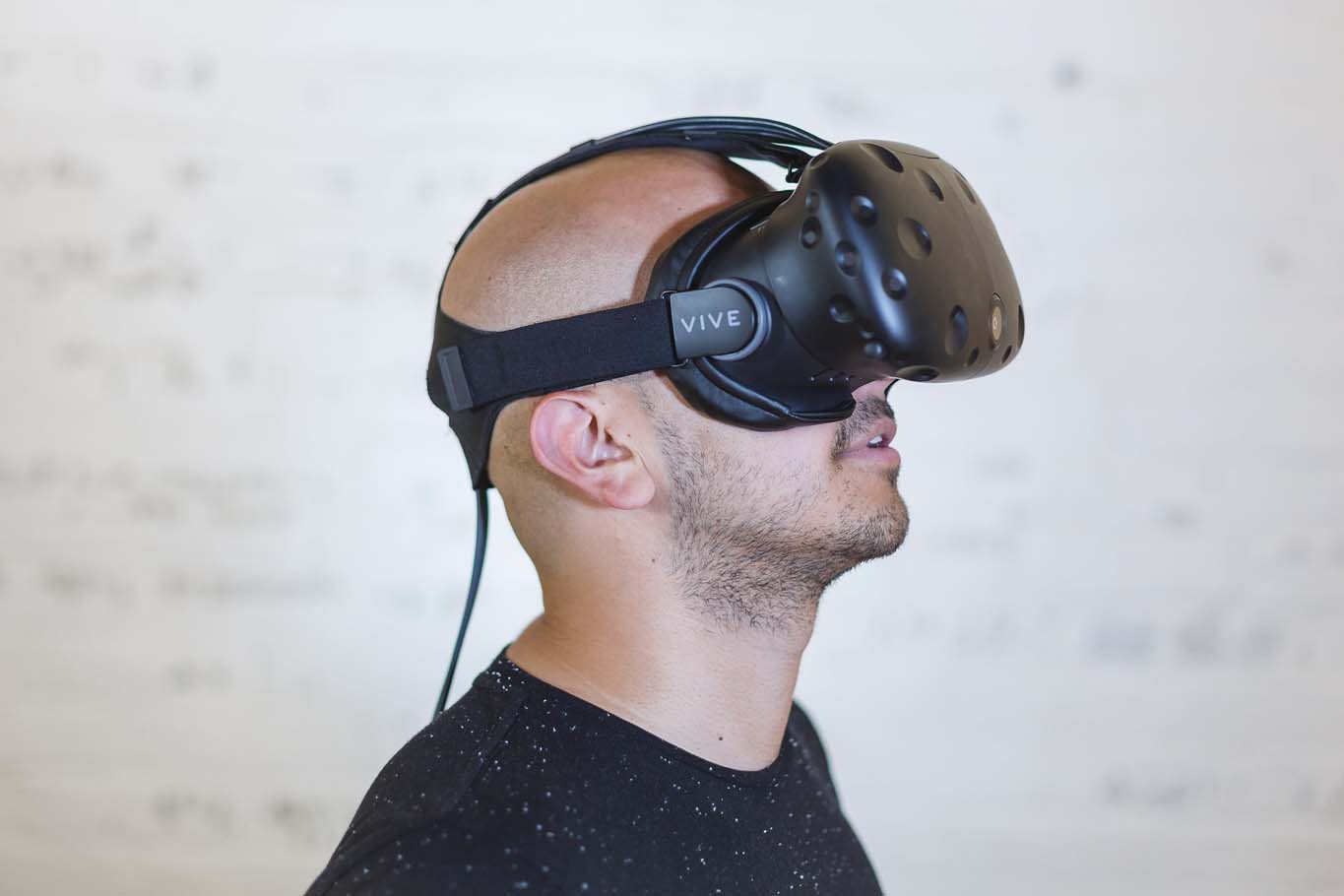VR Hardware Trends & Grants for Virtual Reality Software Development
Virtual Reality (VR) has experienced an explosion in popularity during the stay-at-home orders as a result of the COVID-19 pandemic. According to Statistica, the global VR market reached $3.89 billion USD in 2020, is expected to reach $6.71 Billion USD by the end of 2022, and is on track to hit a staggering $12.9 Billion in 2024. It’s no wonder why companies like Facebook have rebranded to Meta which is investing billions into developing their own ecosystem of products and online services.
There are over 171M VR users worldwide, with that number expected to be dwarfed in the next few years as the cost of virtual reality headsets drops and technology improves.
VR is often associated with head-mounted displays (HMDs), which are commonly known as VR headsets, but VR itself is defined as “a simulated experience that can be similar to or completely different from the real world”. These experiences are most famous for utilizing a combination of HMDs, haptics, and controllers to bring users into a realistic virtual world. The most popular headsets on the market are the Meta Quest 2, Steam Index, and PlayStation VR.
With so much progress happening within the VR market space, it’s becoming hard to imagine a world without virtual environments. Not only is virtual reality taking over the gaming and entertainment industries, but it also has considerable implications for social sciences and psychology, medicine, and other professions where significant training is required to perform in high-risk, high-stress, and/or high-consequence situations.
This article will take a look at hardware trends happening in the VR and HMD industries, as well as how your business can receive government funding for virtual reality software development. Be sure to also visit our articles on the history of virtual reality and the best Canadian government grants for video game developers.
VR and Head-Mounted Display (HMDs) Industry Trends
Omnidirectional Cameras and Photogrammetry
Omnidirectional cameras, also known as 360-degree cameras, have a full field of vision that can construct a complete scene from a fixed position. While some virtual reality applications (like watching music concerts) use a single fixed position, other VR uses require another layer of depth. Photogrammetry helps build spatial awareness by analyzing multiple photographs and determining the distance between two or more points. When mapped into virtual reality, photogrammetry is essential for building a 3D world that users can move through. This is most widely used in virtual tourism, where compiled photographs can create a virtual representation of well-known landmarks.
While computer-generated graphics will be the basis of many VR applications, there is a growing demand for virtual experiences that are developed from high-quality photos and videos.
As a relatively new area of virtual reality, there is still significant room to develop equipment that enables photo and video mapping to digital platforms. Virtual tours and experiences that are based on life-like reconstructions will emerge as an important stream of virtual reality as it has a certain “realness” to it that may be lacking in purely computer-generated environments. Because so many VR applications will rely on these technologies, investing in high-resolution omnidirectional cameras and photogrammetry software is essential for the success of virtual reality.
Other Sensory Input Devices
Humans rely on five senses to guide their perception of reality: sight, hearing, touch, taste, and smell. Replicating the human experience in virtual reality needs to encompass as many of these senses as possible to create the feeling of full immersion, but most modern VR systems are only capable of providing sight and hearing, with some haptic controllers also enabling limited touch interaction.
Developing innovations that can help provide virtual reality users with the sense of touch, taste, and smell will develop a richer, more life-like virtual experience.
Starting with the Sensorama, a mid-1950s invention that helped users watch films while receiving sensory input for all five traditional senses, technology has been evolving to help develop a more realistic virtual reality. While VR headsets are currently limited in their ability to provide sensory input beyond sight and hearing, they could evolve to provide enhanced touch, taste, and smell signals to the user. Current technologies could be improved to provide this functionality, or new equipment could be created to work together with existing systems to provide such an experience. Other senses, such as balance and acceleration, temperature, pain, and sexual stimulation could also be a focus for tech developers.
Current Challenges of Head-Mounted Displays
With that being said, VR isn’t without it’s challenges.
Significant research is being done to improve the quality and reduce the cost of head-mounted displays (HMDs) to deliver a better virtual experience to a mass audience of users.
While primitive HMD models were either too heavy or uncomfortable to wear, headsets are the most vital component for the average VR user. This has meant that almost all technology firms with sizeable research and development budgets are committing resources towards developing the next best headset. Meta’s (formerly Facebook) acquisition of Oculus Rift and the development of proprietary HMDs by Samsung and LG Electronics are indicators that, while advanced, there’s still a lot of innovation happening in the headset space.
VR Software Development Grants, Loans, and Tax Credits
Although virtual reality development projects require significant investment, Canadian government funding is available to expand cash flow and improve ROI. When used strategically, these programs can substantially improve project outcomes and accelerate time-to-market, helping companies react to opportunities more efficiently.
These funding programs commonly fall into four investment clusters, including:
Research and Development
Research and development funding helps support R&D-related activities, both internally and in collaboration with research partners. Companies may access funds to develop virtual reality hardware components, create virtual reality software and games, and advance VR systems to be used for a wider range of applications.
Capital Investment
Capital investment funding can help purchase the advanced computing systems needed to develop immersive VR experiences. It can also support purchasing equipment needed to manufacture virtual reality headsets, controllers, or other hardware.
Hiring and Training
Few tech developers use hiring and training grants as often as they could to improve worker skillsets. This is a missed opportunity since firms can plan ahead and schedule regular hiring and training sessions to advance employee knowledge of systems and developments in the VR market space.
Business and Export Expansion
Business expansion grants can be used to scale virtual reality system production, access new markets, develop international customers, and perform strategic marketing projects.
Virtual reality technology projects are often highly eligible for Canadian government funding programs. To receive the most value from these programs, it’s helpful to map out future projects and begin matching them to government grants and loans that can offset a portion of costs.
This planning process is one critical component of a successful funding approach. When combined with other forward-thinking funding strategies, companies can reduce the time it takes to complete applications and improve the likelihood of a successful funding application.
Elements of a Government Funding Plan
Government funding plans provide a detailed, action-oriented blueprint of specific Canadian government grants and loans your company may access. Through careful assessment of upcoming projects, VR technology developers can identify which programs to apply for and when the ideal time would be to submit an application.
Government funding plans can include incentives for all major investment areas: research and development, capital investment, hiring and training, and business expansion.
To develop and execute a government funding plan for your business, perform the following activities:
Identify Strategic Priorities: Evaluate your business’ top strategic priorities over the next 12-24 months and determine where government funding is needed most.
Strategize a Funding Plan: Identify specific grants and loans based on upcoming projects and company eligibility criteria.
Develop Funding Applications: When funding programs are available, develop applications based on specific projects that are achievable and could be improved by securing grants or loans.
Maintain a Commitment to Funding: Review funding plans regularly to ensure application deadlines are met and that opportunities to receive funding are not missed.
Learn How to Access Government Funding for Virtual Reality Software or Hardware Development
With VR being such a large industry that is poised for significant growth over the next few years, more and more businesses are investing into the exciting and innovative technology. If your business is looking to develop new software or hardware for VR-related applications such as video games, virtual experiences, and educational tools, the Canadian government has a wide variety of R&D funding programs that your business may be eligible for.
The Scientific Research & Experimental Development (SR&ED) Tax Credit could be a good fit for your business to receive retroactive research tax credits on eligible costs, or the Industrial Research Assistance Program (IRAP) provides up to 60-80% of labour costs in grant funding. The professional grant writing and SR&ED consulting team at Mentor Works, a Ryan Company, can take care of the application process on behalf of your business and we may be able to help stack funding between multiple programs to provide your business with the maximum amount of funding support. Find out if your business can qualify for funding by speaking with a member of our team for free.
For businesses who have never received grants or loans before, it can be difficult to understand how the government funding process works. This doesn’t need to be the case though; technology developers can learn about government grants and loans by attending a free government funding webinar.


